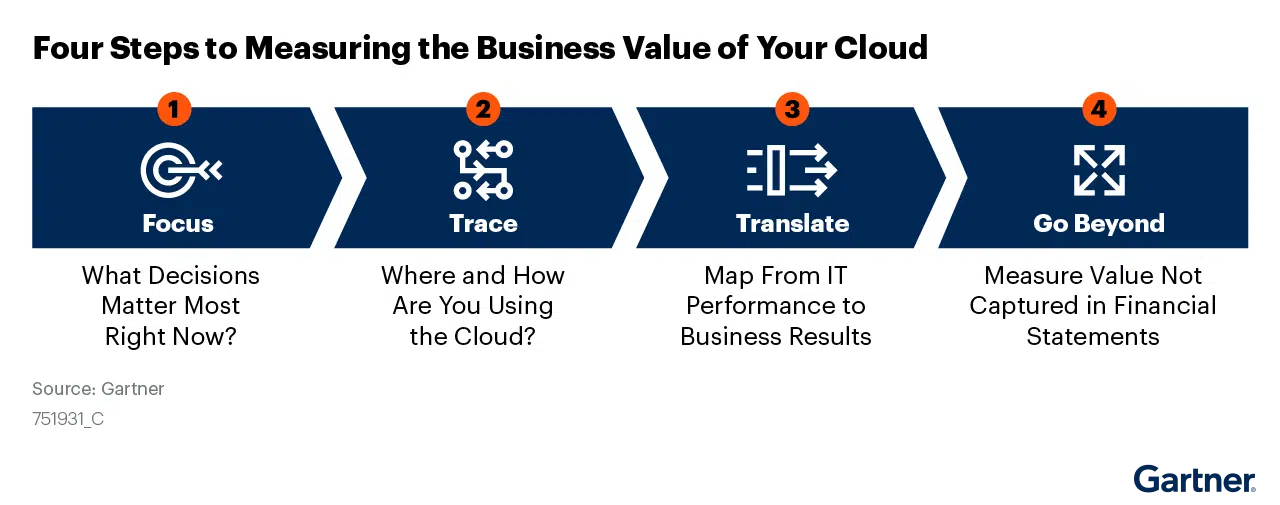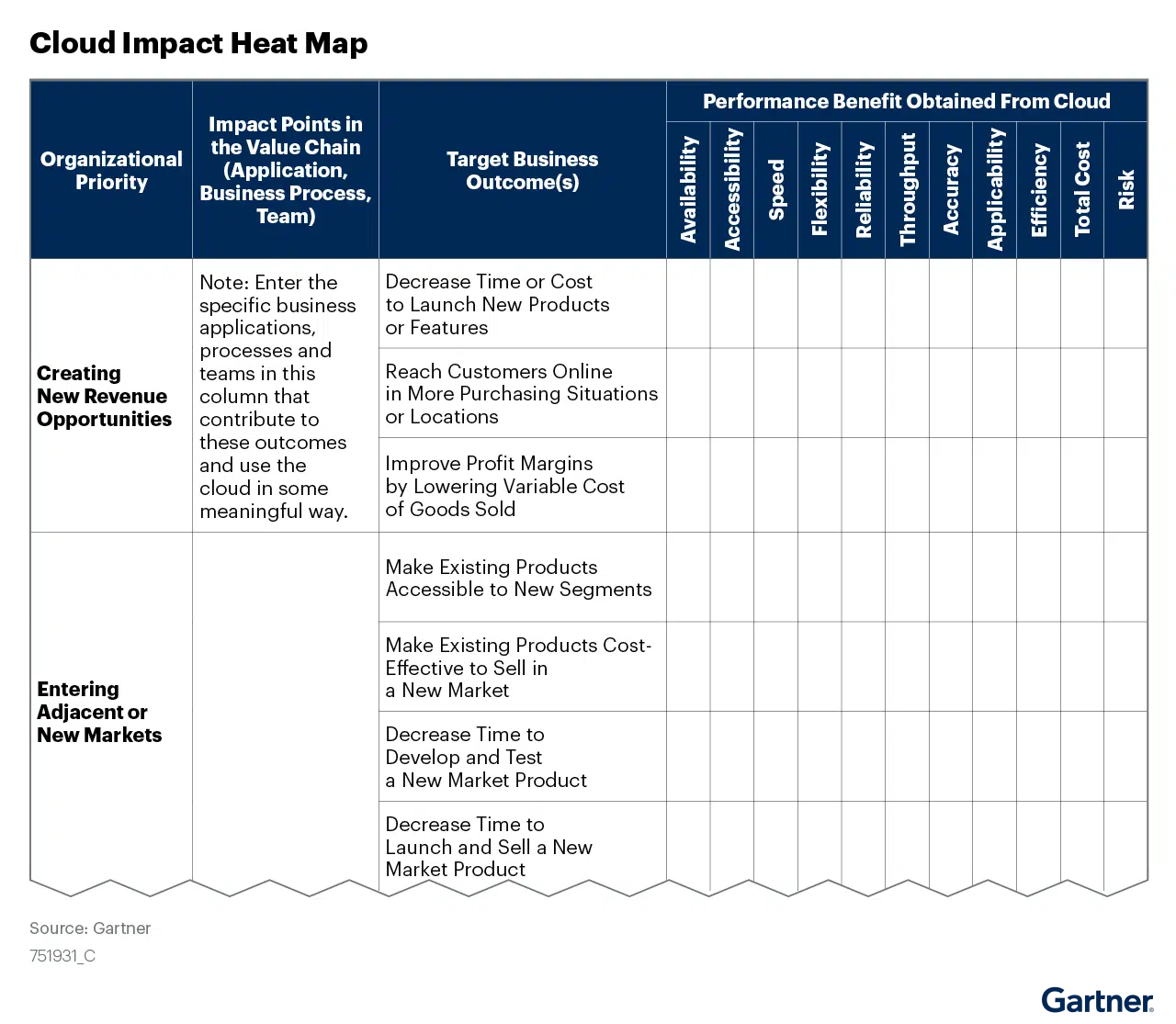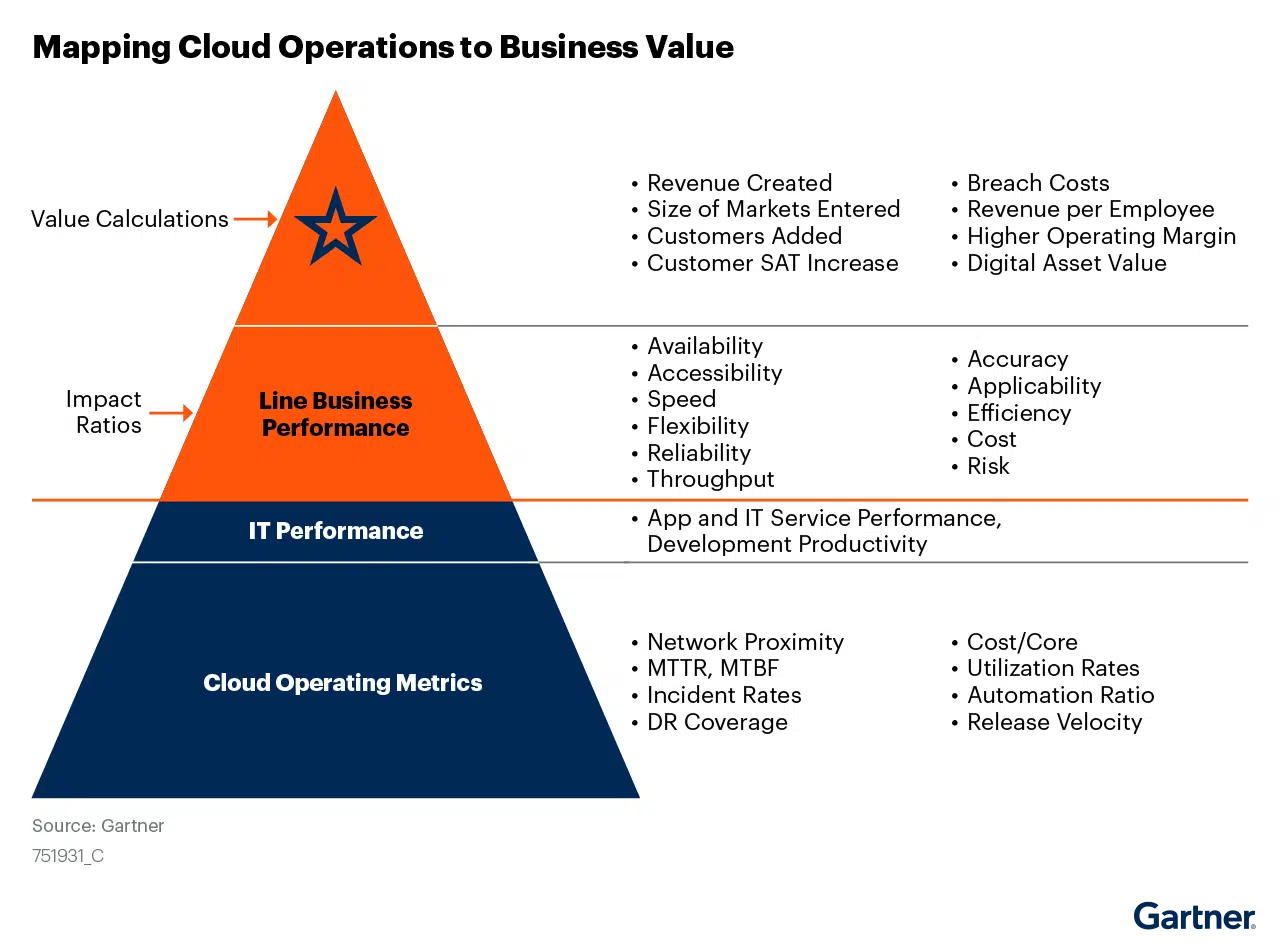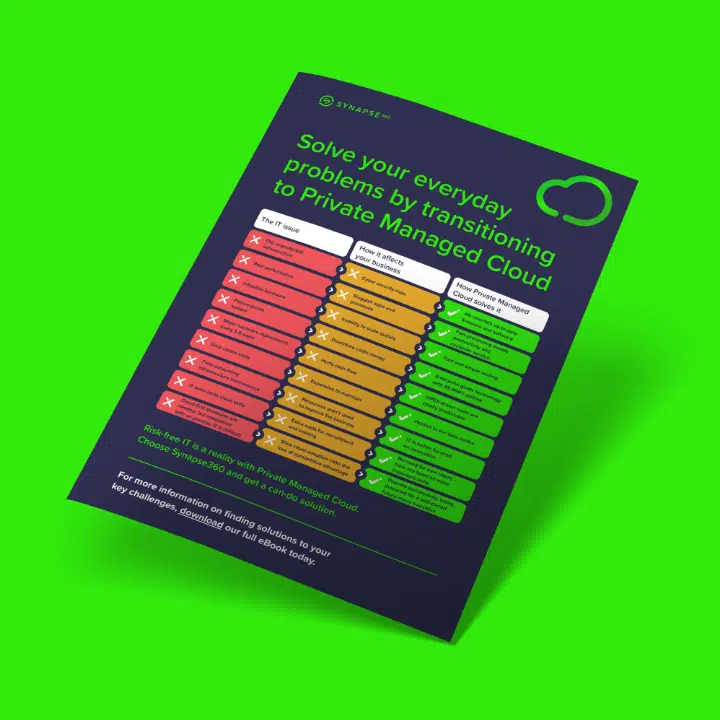In this article based on a 2021 Gartner report, some light is shed on ways to know the value of your cloud initiative, meaning you can report back to executives on what the cloud is actually doing to improve their business performance.
Due to the expansive nature of possibilities when using a cloud setup, seeing the return can often be a confusing process, but with these 4 steps you can evaluate just how much you are getting out of it.
#1 Focus on what’s important
A common issue that results in convoluted evaluations of cloud performance is business execs focusing on broad level results. It’s important for CIO’s to establish with the execs metrics that actually matter to business performance and growth.
Define how cloud should be contributing to business goals. If the goal is for cloud to improve operations, the metrics could be based on how cloud affects cost, speed and efficiency. If business growth is the main aim then you should focus on metrics that show contributions to revenue, as well as assessing performance of new solutions, if the cloud solutions allow entry to new markets, and the nurturing capability of customer relations. If you are using the cloud to drive a deeper digital transformation to the business then make sure to measure the speed at which you are at getting towards this goal, and the shape of this evolved business model.
Understand what matters most right now. Is it current value from the cloud, or is it a more long-term solution?
#2 Trace the Current Cloud Usage
Whether or not your company has a grander development vision under the cloud or not, it’s almost a given that you still need to understand the current impact of cloud in real-time. Understand some of the core business objectives of the company and pin point how cloud is making an impact in that area.
Work with department leaders of key areas of the business where cloud is being used and determine if they are seeing positive growth from cloud usage, and discover how they are applying it. You may have to take a guidance role in these discussions, when a department leader isn’t sure from a quantifiable standpoint how cloud is affecting them try asking them to rank the benefits of cloud on their team from low to high. Alternatively if leaders are finding they are not hands on using the cloud functions that much ask them to derive their capability to deliver based on what the cloud offers them.
Using the following ‘Heat Map’ provided by Gartner to measure the outputs
These kind of measurement tools can also be very useful in showing tools of your cloud coverage that are being underutilised, or perhaps are not even worth having at all.
#3 Convert your IT results to Business Terms
Putting the more technical IT terms in to business level terms is an important part of the mapping process, so that business execs can digest the value cloud is bringing.
The Gartner figure show below shows a useful mapping guide, where you can match the different cloud functions to their business impact areas.
A strong starting point would be to focus on 3 particular areas of impact of the cloud.
- How cloud is impacting the operations of applications used in the business operations?
- How is cloud usage improving on service, such as speed of completing service requests or service delivery costs?
- Has moving assets to the cloud improved on software development? Such as improving update times on new versions and lower performance costs.
Once you have all the pieces of performance feedback, tie it all together by putting it in to terms CFOs care about and presented in a way that they have worked in in the past, because this is where future decisions will come from.
#4 Beyond Financial Terms
Last but not least, there should always be a long-term vision in place. Leadership will want to know there is a strategy in-play, and they’ll want a way to evaluate it.
A common trap can be reporting back with a heavy focus on financial statements, but these methods are often not best suited to reflecting the long-term value of using the cloud. This is due to the three most prevalent strategic benefits of the cloud not being applicable to standard financial reporting. These 3 benefits are…
- Business Agility: A huge advantage of the cloud is scalability. As unforeseen circumstances occur, businesses can adapt quickly by scaling up or down, with ability to test pilot new functions at low risk, and switch investment amounts as needed.
- Increasing Returns to Scale: As more teams within a business increase their usage of platforms hosted within the cloud, the digital ecosystem can flourish and grow. Each individual will gain more value as the network increases.
- Innovation Velocity: To be truly futureproof a business needs to be on the cusp of digital innovation. Cloud adoption of research & development mean businesses of all sizes can experiment. Whether it’s integrating AI or Machine Learning technologies, the speed at which IT can test out these functions is greatly increased and frees up a ton of work hours.
Source: How Executives Can Measure the Value of Their Cloud Initiatives (gartner.com)










